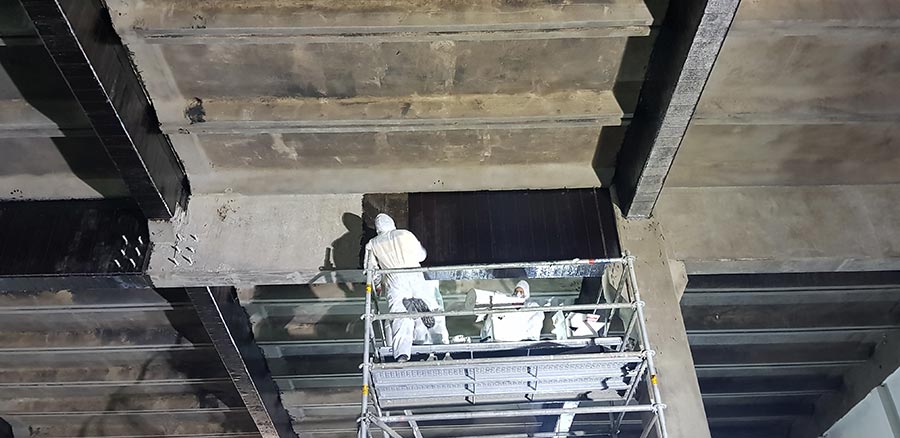
The chemical reaction is faster at higher temperatures. Otherwise, repair materials will be too thick to penetrate and flow into the crack.Įpoxies cure or become hard because of the chemical reaction between the resin and hardener. Lower viscosities are required for tighter cracks. Grades I and II epoxies have viscosities less than 20 cps and between 20 and 100 cps, respectively.įor comparison, the viscosities of some common liquids are: water–1 cps, milk–3 cps, anti-freeze–15 cps, maple syrup–150 to 200 cps, and honey–3000 cps. The lower the viscosity value, the thinner (runnier) the material. Viscosity is the liquid’s resistance to flow and is measured in centipoises (cps). Gravity filling consists of pouring a low-viscosity epoxy into cracks that have been sawed or routed and letting gravity pull the epoxy down into the cracks. But gravity filling works well and is the most common means of installing epoxy into cracks in flatwork or horizontal surfaces.
CONCRETE SLAB CRACK REPAIR MEMBRANE CRACK
Repairing an active crack with epoxy typically results in a new crack forming near the original, epoxied crack.Įpoxy injection is a common means of installing epoxy into cracks, especially for vertical and overhead surfaces. Epoxy repairs not only seal cracks but also restore the strength and stiffness of the concrete. Structural repairs typically involve using epoxy resins to bond or weld the concrete back together. After all, random or out-of-joint cracks in flatwork are really self-installed joints. Usually, active cracks in slabs are actually working joints and should be treated in the same manner as joints. Dormant cracks have stable widths and can be repaired with either rigid or flexible materials.Īctive cracks should be repaired only using a flexible material that can accommodate future crack movements. Of course, the stability of cracks depends on the root cause and the amount of reinforcement crossing the cracks. Determining the amount of reinforcement passing through a crack is important for predicting future crack behavior and choosing the best repair option.Ĭracks that are crossed by steel reinforcement typically are stable and often are considered dormant.



Cracks due to other causes, though, such as soil settlement or heave, may never stabilize and can continue to widen unless a significant amount of reinforcement passes through the crack. New cracks in unreinforced concrete will continue to grow and widths may double before crack-width growth subsides.įor cracking caused primarily by drying shrinkage, cracks will stabilize eventually. When reinforcement passes through a crack, both crack width and future crack width growth are controlled. Reinforcement itself also provides load transfer and helps maintain vertical slab alignment across cracks. The success of a repair technique will depend on the slab loading and the quality of the base material and soil subgrade.Īlthough steel reinforcement does not prevent cracking, it does limit crack widths so aggregate interlock is maintained. If the crack width is less than about 0.035 inches, aggregate particles projecting across the crack into recesses on the other side will typically provide sufficient load transfer and maintain vertical slab alignment across the crack.įor widths greater than that, maintaining vertical slab alignment may be challenging. Unless steel reinforcement passes through a crack, vertical slab alignment and load transfer across the crack are dependent on the aggregate interlock. Also, many repair options are somewhat dependent on crack widths. Measuring crack widths helps to classify the severity of cracks and evaluate the effectiveness of the aggregate interlock across the crack for vertical slab alignment and load transfer. This information, especially reinforcement details and crack activity, is extremely important when selecting the best repair option.Ĭrack widths typically are estimated using a crack comparator card. When evaluating a slab or performing a crack survey, always measure the crack widths and determine if steel reinforcement passes through it and whether the crack is active or dormant. Before choosing a crack repair option, concrete surfaces contractors should perform a crack evaluation and establish the repair objectives.

For these reasons, building owners commonly want cracks in interior and exterior slabs repaired. However, cracks may affect appearance, performance, and maintenance costs. Cracking of concrete flatwork is natural, expected, and accepted.


 0 kommentar(er)
0 kommentar(er)
